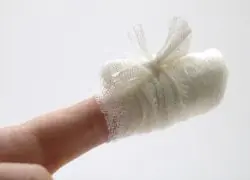
Sometimes we can get burned, of course unpleasantly, but no one is immune from this. What to put on a burn? Today, a sufficient number of special products are produced that will help in this situation. But it happens that they simply are not at hand, and in this case it is better to know what can replace them.
Is it possible to apply oil to a burn?
Lubricating the wound with sunflower, olive, butter, as well as any substances of an oily nature is strictly prohibited for two reasons.
- A fresh wound “burns with fire” - the tissues still retain heat and continue to deteriorate. That is why it is customary to wash the burn site with cool water. If you apply oil to a wound, the temperature of the skin will increase and the process of tissue destruction will worsen.
- Any oil preparations are non-sterile substances - along with them, very dangerous pathogenic microorganisms can enter the body through an open wound.
What else should you not apply to a burn?
Among the products that are dangerous for a burn victim are popularly known products:
- kefir;
- sour cream;
- grated potatoes;
- tea;
- beaten eggs;
- leaves of cabbage, plantain, burdock;
- pumpkin and carrot juice.
All these products, like oil, are non-sterile and therefore pose a risk of infection. And there is minimal benefit from them, except perhaps the placebo effect. But if you really believe in folk methods, before smearing the skin after a burn with the above remedies, wait until the wound heals under a sterile bandage and ointment approved by science.
How to apply chemical burns?
Proper first aid is important when treating burns caused by chemicals. It is necessary to rinse the wound under cool running water for at least 20 minutes and then neutralize the chemical.
- the alkali is neutralized with a solution of vinegar, citric or boric acid;
- the acid is neutralized with a soda solution;
- the lime is neutralized with a sugar solution (and before that, remove the remaining lime with a dry bandage, but not with water!);
- phenolic compounds are neutralized with vodka or alcohol.
How to put on an iron burn?
The iron can affect the skin up to 1-2 degrees (redness, swelling, blisters). The wound is cooled with water, and then sprayed with Panthenol spray or lubricated with Vishnevsky ointment, Solcoseryl or “Rescuer”. After treatment, apply a sterile gauze bandage. Cotton wool cannot be used!
What to apply to a burn from boiling water?
If a boiling water burn affects more than 1% of the skin area (an area the size of the palm), you should immediately consult a doctor. This also applies to burns of the feet, genitals, and face - if not treated correctly, there is a high risk of scarring.
The burn should be cooled with water pressure or cold compresses should be applied. Spray the skin with Panthenol, apply a bandage, give the victim Ibuprofen and call an ambulance. For a minor burn, it is enough to lubricate the wound twice a day with Solcoseryl or “rescuer”, changing the bandages.
How to apply oil burns?
Most often, oil burns are 2nd degree, that is, with the formation of blisters. They cannot be pierced, let alone cut. The burn site is cooled, treated with Panthenol, Solcoseryl gel or “rescuer”, and the wound is bandaged. The bandage and ointment should be changed twice a day, maintaining sterility. If more than 1% of the skin is affected, medical attention is required.
What ointment to apply to a burn?

In the first days after a burn, it is better to use a gel or spray; as healing progresses, you can switch to using an ointment. The most effective remedies for burns:
- panthenol;
- solcoseryl;
- levosulfamethacaine;
- dermazin;
- olasol;
- synthomycin emulsion;
- "rescuer".
What else can you apply to a burn?
When the wound heals, you can use vitamin E (oil solution) and sea buckthorn oil - these products speed up the process of tissue regeneration and reduce the risk of a scar. To prevent infection, the skin around the burn (but not the wound itself!) is lubricated with iodine or brilliant green.
A burn is an impact on skin tissue. The impact can be: thermal, chemical, electrical or radiation. You can get a burn anywhere: in the kitchen, at work, in nature, and even while relaxing on the beach.
The burn causes severe pain, it seems that the pain penetrates deeper and deeper. At such moments, you want to cool the burned area and anoint it with something so that it goes away faster, but not all methods can achieve relief.
Why shouldn't you put oil on a burn?
There is controversy among experts about the use of various oils against burns. You can definitely use oils, although some people believe that oil products slow down the healing process.
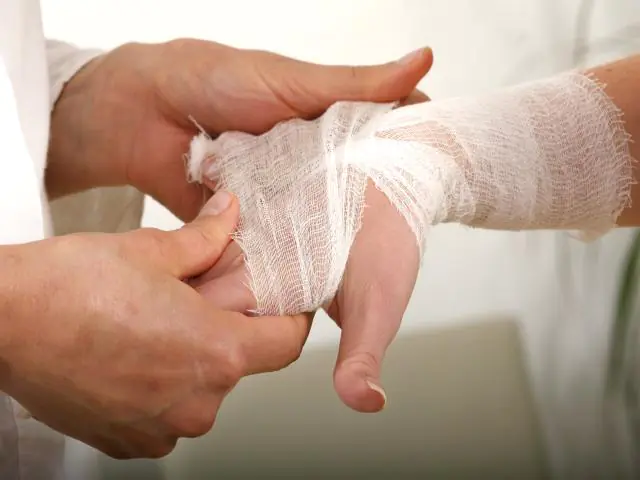
However, in practice, quite the opposite happens; the oil softens the skin, relieves pain, and promotes faster wound healing. The only thing you need to know is what oil and for what burns you can use it. The doctor's instructions should be strictly followed.
Help with sunburn
In summer, as a rule, in particularly hot countries, people sunbathe. Some try to make their skin a little darker for beauty, and some, unknowingly, abuse the sun's rays, which are dangerous to health. The burn does not appear immediately, but after some time has passed in the form of redness, this is especially noticeable in people with fair skin.
The first aid for a sunburn can be olive oil, which contains minerals and vitamins. Before applying oil to a burn, it should be heated in a water bath and applied carefully to the painful area. The oil creates a protective layer that retains moisture under the skin and prevents it from drying out.
Help with boiling water burns
Burns come in varying degrees, and the doctor’s treatment prescription depends on this. For burns with boiling water of the 2nd or 3rd degree, medical intervention and possibly surgery are necessary, and a burn of the 1st degree can be treated independently at home. This will be facilitated by an ointment made from oil and beeswax. 1 tbsp. l. wax and 3 tbsp. l. Mix vegetable oil and heat in a water bath. After cooling the mixture, you can apply a compress to the sore spot. The ointment relieves pain, and after a couple of days not a trace remains of the burn.
Contraindications for the use of oils
There are many types of oils in nature: oils of trees, plants and herbs, butter, castor and others. All of them help in the treatment of burns to one degree or another. But there are contraindications for which the oil should never be used for treatment. These are burns above 1st degree, electric shock, blackened or, conversely, whitened wounds, open wounds, and burns from boiling oil.
Doctors strictly prohibit the use of sunflower oil in treatment, as it creates a denser film that prevents the circulation of oxygen into the wound.
If damaged by chemicals, it is also not recommended to use oil treatment, only rinse with water. But a burn from quicklime cannot even be washed off. For any type of burn, it is best to consult a doctor. The doctor will determine how affected the area is and to what extent.
You should not self-medicate, as this can lead to irreversible consequences. After burns, scars may remain; the skin in the area is thin and vulnerable. Important advice: it is necessary to follow safety precautions when working with life-threatening factors.
If you handle electrical appliances, heat sources and chemicals carelessly at home and at work, you can get a serious injury - a burn. In especially severe cases, it can even cause the death of the victim. But even with minor injuries of this type, a person needs high-quality and quick help to minimize the consequences.
It must be said that, despite the abundance of information on how to provide first aid for burns, people often do the wrong thing, worsening the patient’s condition and slowing down the recovery process.
A common incorrect action taken when dealing with such an injury is to apply oil to the wounded area. Many people say: “When you get a burn, apply sunflower oil to the damaged skin and relief comes.”
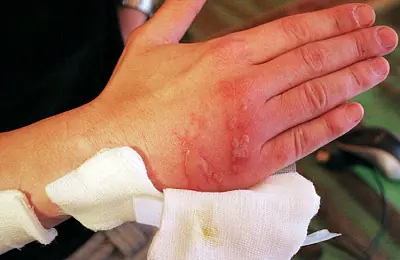
However, doctors have a different opinion on this matter. Any oil creates an airtight film on the skin, which slows down the cooling of the wound and also creates a very fertile environment for infections. In addition, using concentrated essential oils on damaged areas can cause oil burns, which will further aggravate the situation. Therefore, such actions are unacceptable. However, is it necessary to completely avoid oil for burns? Let's try to figure it out.
When is use justified?
It should be said right away that the use of this remedy for burns is still possible. This applies to wounds that are already healing. In this case, treatment with vegetable oil speeds up the healing process; in addition, the forming crust will come off the wounded surface faster, and new skin will appear in return. This remedy also has an analgesic effect.
That is why there are many traditional medicine recipes that contain essential oils aimed at speedy healing of injuries of this type. A specialist can recommend their use, but you need to clearly know what concentration the product should be in and how long it can be kept on the skin.
In addition, it is necessary to take into account the contraindications that exist in each specific case.
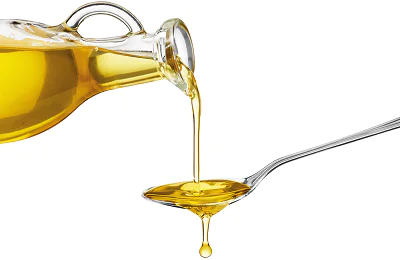
To figure out whether it is possible to anoint the skin with oil during a burn, you should understand the peculiarities of the action of this product on damaged surfaces. It consists of the following two features:
- the formation of a protective film that prevents infection from entering the wound;
- reducing the risk of edema.
These two features are inherent in any type of oil. Some varieties also have their own characteristics, for example, providing an anti-inflammatory effect, softening injured areas, and disinfection.
A doctor may prescribe treatment with oils in the following situations:
- small area of the affected area (no larger than the size of the palm);
- presence of redness, but no charring;
- no serious damage;
- the injury occurred on the external parts of the body without affecting the mucous membranes;
- the resulting burn was not due to exposure to electric current;
- the general condition of the victim is satisfactory.
It should be said that this treatment is not suitable for everyone. The fact is that this medicine has contraindications that must be taken into account. They consist of the following features:

the burn has a large area;- mucous membranes are damaged;
- degree of injury – higher than the first;
- source of injury - electricity;
- presence of blisters;
- suppuration;
- violation of skin integrity.
In all these situations, before using any recipe with an oil component, it is better to consult with your doctor. It is he who needs to be asked whether it is possible to anoint burns with oil.
Choice of product
From the entire range of such medicines, we can name the following types of oils that can be used in the treatment of burns:
- Sea buckthorn. It has anti-inflammatory and healing effects. In addition, it can be used to prevent infection of damaged surfaces and eliminate swelling.
- Coconut. This remedy is very useful for sunburn. Thanks to it, recovery is accelerated, pain is reduced, and the risk of decay is reduced.
- Fir. It has disinfectant and anti-inflammatory properties.
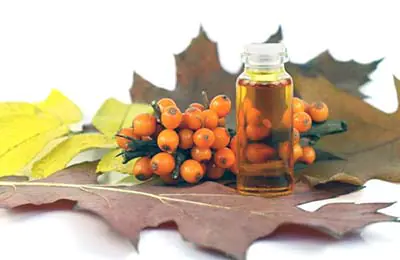
Lavender. It is used for burns from boiling water, sunburn and thermal burns. It is distinguished by its healing properties.- Creamy. This product is rarely used as a medicinal product. But if you combine this oil with other components, you can get good results.
- Linen. This remedy is characterized by the ability to relieve pain, relieve inflammation and heal damaged areas.
- Apricot. It is used mainly to improve the condition of the skin, but it also perfectly softens and nourishes damaged areas, while accelerating their regeneration.
- Peach. With its help, you can supply damaged skin with vitamins and speed up the healing process.
Separately, it is worth dwelling on the question of whether a burn can be anointed with sunflower oil. The fact is that it is always at hand, and it is precisely this that they most often try to use to provide first aid to the victim. And such actions, unfortunately, are usually wrong.
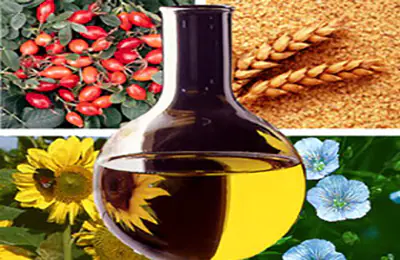
Sunflower oil can soften the skin, but it does not have a healing effect. In addition, it prevents air from contacting the damaged surface, interfering with healing. Therefore, this product should not be used when providing first aid. Its use may be allowed in the future, when the wound heals and it is necessary to stimulate peeling of the crust.
Incorrect and untimely use of oils can significantly harm the patient. Because of them, allergies or irritation may occur, and often due to lack of contact with air, the process of pus accumulation begins in the wound.
Therefore, when using this method of treatment, you need to be very careful and use oils only at the stage of healing of the burn.



